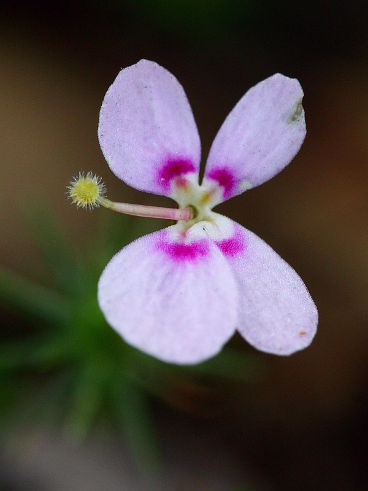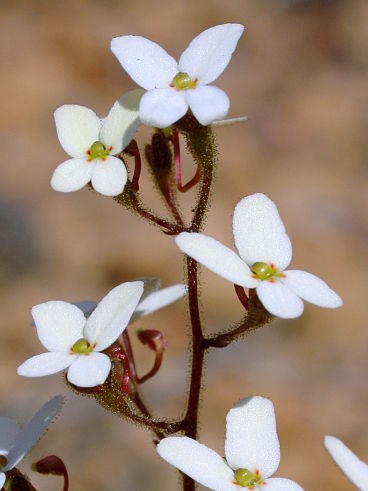Darling Scarp, Western Australia
Introduction
The Darling Scarp is situated to the east of Perth, separating the Swan Coastal Plain from Western Australia’s Wheatbelt region. Stretching across several hundred kilometres, it is part of the much larger Darling Fault, a major geological fault line that runs along the west coast of Western Australia for over 1000 kilometres. Most of the Darling Scarp is covered by vast expanses of forest and woodland that are home to a large variety of unique plant and animal species, including several endemic orchids.

Much of the Darling Scarp’s unique flora is closely associated with areas that receive plenty of water from winter rainfalls, such as creeks and low-lying flats. Another unique habitat found throughout the Darling Scarp are shallow soil pockets on granite outcrops, often covered with a dense layer of moss and lichen. They host a highly specialised community of plants that have developed strategies allowing them to survive the harsh conditions during the hot, dry summer season, when temperatures can reach 40 °C and rainfall is scarce. Several rare and unusual orchid species are known from only a handful of granite outcrops near Perth.



While the summer can be very hot, it is not uncommon for temperatures to drop below 0 °C during the winter. Overnight frost will turn the landscape into a glistening winter wonderland, coating plants and rocks in a layer of intricate ice crystals. However, this spectacle does not normally last very long, as the warming rays of the sun will melt the ice again shortly after sunrise.


Fauna
Among the animals found along the Darling Scarp is the iconic Bobtail Lizard (Tiliqua rugosa), which is one of the most common and widespread reptiles of Australia. Besides their unique appearance, Bobtail Lizards have developed an unusual defence strategy. When they feel threatened they will open their mouth widely and stretch out their blue tongue in an attempt to scare away predators. Due to their reluctance to flee in combination with their habit of basking in the sun along roads and tracks, Bobtail Lizards are frequently run over by cars, and one needs to be careful not to step on one while walking through the bush.

Among the largest reptiles of the Darling Scarp are the Monitor Lizards (Varanus). The most commonly encountered species is the Sand Monitor (Varanus gouldii) which can grow up to one and a half metres in length. Its sharp claws allow it to dig burrows and turn over rocks in search for prey. Sand Monitors are found throughout Australia with the exception of Tasmania and inhabit a wide range of different habitats from the arid interior to the coastal woodlands of Western Australia and Queensland.
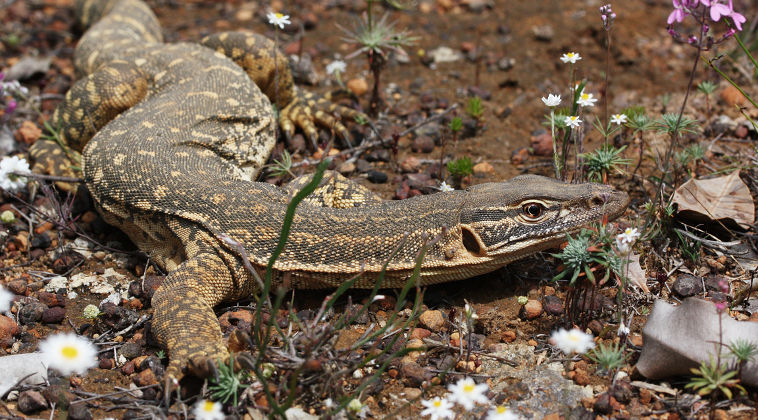
Several reptile species are perfectly adapted to life on and around granite rocks. One of them is the Ornate Dragon (Ctenophorus ornatus). This medium-sized lizard is often seen basking in the sun during the day. Thanks to their grey-brown, marbled appearance, Ornate Dragons almost perfectly blend in with their surroundings and are difficult to spot. When disturbed, they will run off at an astounding speed and seek shelter in narrow rock crevices.
A species of gecko commonly associated with granite outcrops is the Variegated Dtella (Gehyra variegata). It too is perfectly camouflaged against the granite rock thanks to its grey-brown, marbled skin. The Variegated Dtella is a nocturnal animal that shelters in crevices and underneath rocks during the day and only emerges at night to feed on insects.
Gould’s Hooded Snake (Parasuta gouldii) is another reptile species commonly associated with rock outcrops. This relatively small, venomous snake can grow up to about half a metre in length and is identified by its orange-brown scales with black edges and characteristic black head. It is most frequently found sheltering beneath rocks or logs.
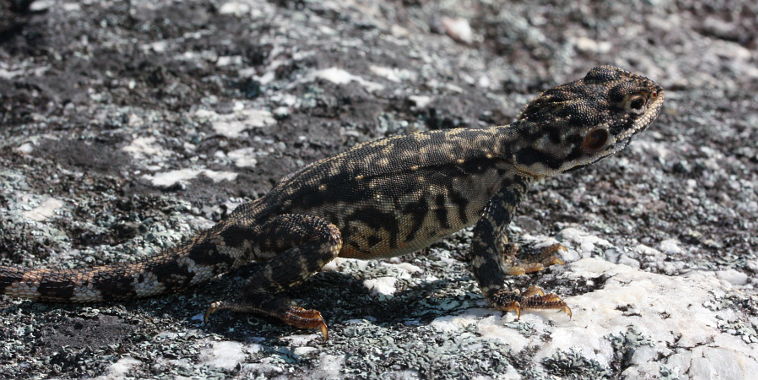
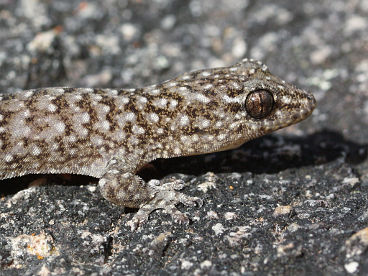
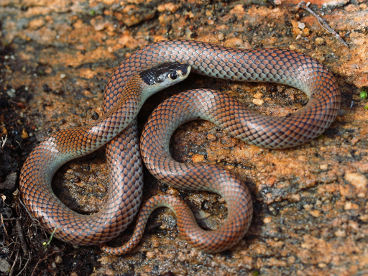
Another inhabitant of rocky outcrops along the Darling Scarp is the Southwestern Crevice Skink (Egernia napoleonis). It is endemic to south-western Australia where it is generally common in rocky habitats. With a maximum length of 25 cm it is one of Australia’s larger skinks and is frequently seen basking in the sun on warm and sunny spring days.
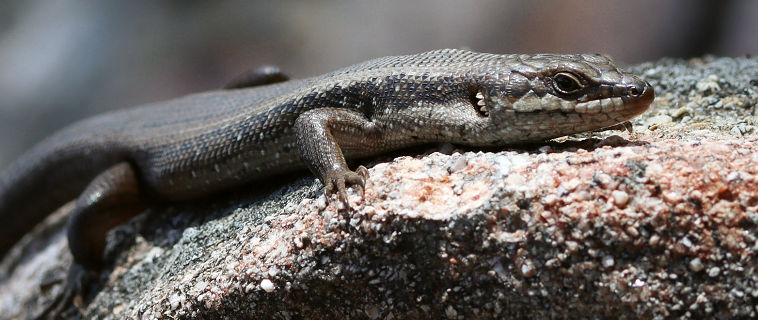
A rarely seen inhabitant of the Darling Scarp is the Short-beaked Echidna (Tachyglossus aculeatus) which can be found all across Australia. Echidnas are very timid animals and will curl into a spiky ball when they feel threatened, with only their long snout still sticking out. Once the threat has passed, they will uncurl again and continue to forage for ants and termites in the leaf litter. Unlike most Australian mammals, Echidnas are diurnal animals and therefore more likely to be encountered during the day.
Among the most abundant and dominant animals of the Darling Scarp are undoubtedly the birds. The noisiest of them all are the Laughing Kookaburra (Dacelo novaeguineae) and numerous species of parrot, including several species of Black Cockatoo (Calyptorhynchus), the Galah (Eolophus roseicapilla) and the Australian Ringneck (Barnardius zonarius). A less frequent visitor to the Darling Scarp is Major Mitchell’s Cockatoo (Lophochroa leadbeateri), also known as Leadbeater’s Cockatoo, which normally lives in the more arid parts of Australia.


The Darling Scarp is not exactly a great place for watching butterflies, although a small number of species can be encountered along the western slopes during springtime. Among the more common species is the tiny Two-spotted Line Blue (Nacaduba biocellata) which is easily identified by the two characteristic eyespots on the hind wing. It is one of Australia’s most common and widespread butterflies and can be found across the entire country in a variety of different habitats.
Several species of Skipper (Hesperiidae) endemic to south-western Australia can be encountered on the Darling Scarp. Among them is the Western Sand Skipper (Antipodia dactyliota) which is on the wing in mid spring. Other endemic butterflies found on the Darling Scarp include the Western Brown Skipper (Motasingha dirphia) and the Western Australian subspecies of the White-banded Grass Dart (Taractrocera papyria subsp. agraulia).
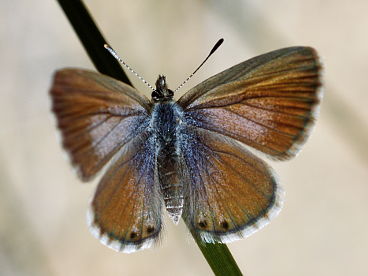
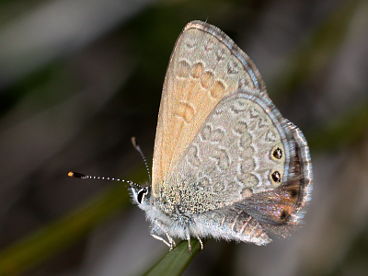
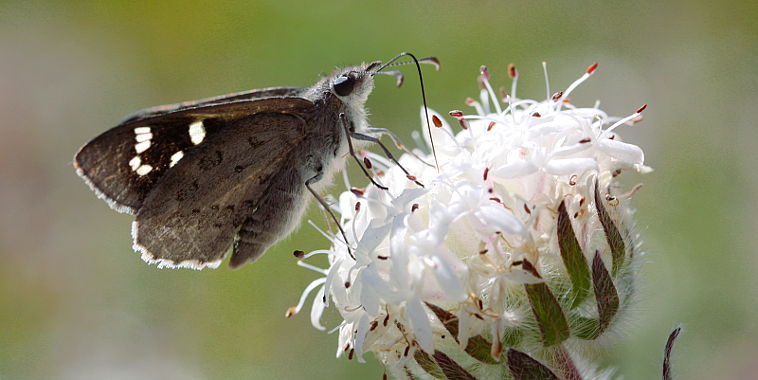
The rocky summits of some of the more exposed mountains along the Darling Scarp are often visited by hill-topping butterfly species during springtime, including the Wood White (Delias aganippe) which is the only native species of White (Pieridae) that occurs in south-western Australia. Another spectacular butterfly that is occasionally drawn to exposed hilltops is the Copper Dusky Blue (Candalides cyprotus). With its magnificent coppery upperside it is a spectacular sight and easy to identify. While widespread throughout southern Australia, Copper Dusky Blues are generally uncommon and rarely seen.
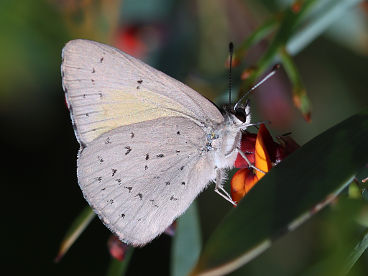
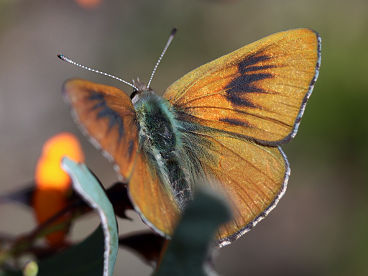
Among the many other insects found throughout the Darling Scarp, the grasshoppers are notable for their enormous variety of colours and shapes. Many species are wingless and perfectly camouflaged when resting on the ground, on rocks or in the leaf litter. In some species, the camouflage is so perfect that they resemble a tiny pebble or piece of wood and are impossible to see on the ground unless they move. A small selection of unidentified grasshoppers from across the Darling Scarp is shown below.

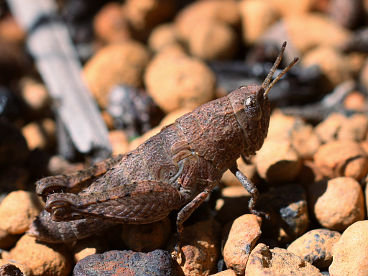
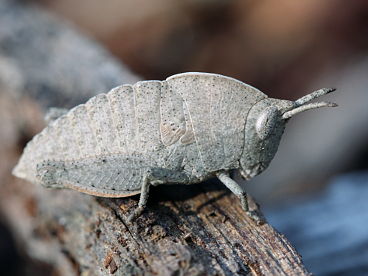
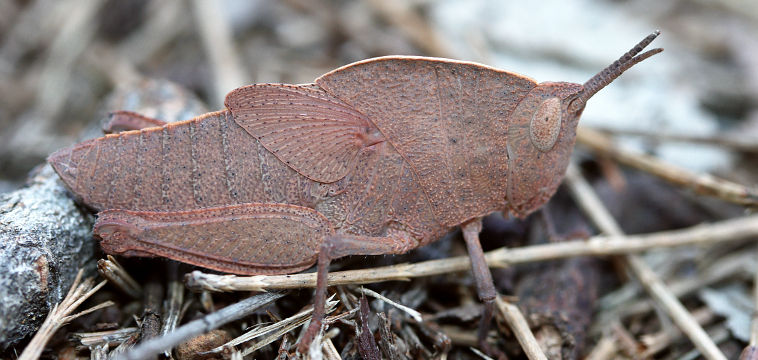
Orchids
The Darling Scarp is home to a large number of colourful orchid species, most notably Sun Orchids (Thelymitra) and Donkey Orchids (Diuris). In fact, quite a few species are endemic to the Darling Scarp and found nowhere else in the world. This includes species such as the Darling Range Duck Orchid (Paracaleana ferricola), the Granite Duck Orchid (Paracaleana granitica), the Slender-leafed Duck Orchid (Paracaleana gracilicordata), the Crystal Brook Star Orchid (Thelymitra magnifica) and several more. Among the richest orchid habitats are the numerous granite outcrops scattered across the Darling Scarp as well as the rocky slopes along the western edge of the escarpment.
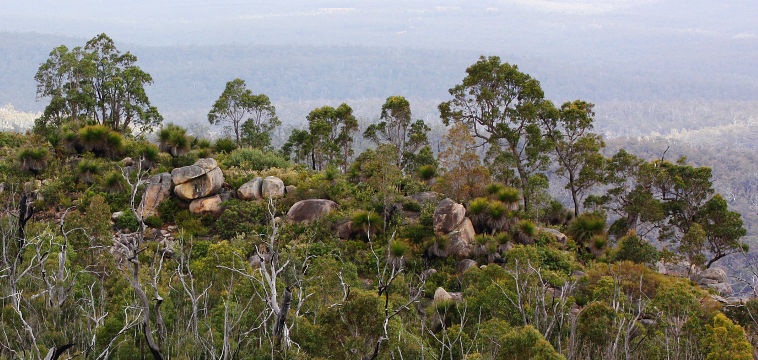
Among the numerous orchid species found along the Darling Scarp, Sun Orchids owe their common name to the fact that they tend to open their flowers only on warm and sunny days. The Darling Scarp is home to several spectacular species of Sun Orchid, many of which are rare and endangered. Among the more common species are the beautiful Queen Orchid (Thelymitra crinita) and the Scented Sun Orchid (Thelymitra macrophylla), both of which are abundant throughout the Darling Scarp, flowering in springtime from mid September until early November.


The Lemon-scented Sun Orchid (Thelymitra antennifera), also known as the Lemon-scented Sun Orchid, is one of the most common species of Sun Orchid along the Darling Scarp. The orchids are usually found on and around granite outcrops where there is sufficient moisture in soil pockets or from rainwater runoff. Lemon-scented Sun Orchids often form large colonies and are sometimes found in the company of other orchid species, such as the Twisted Sun Orchid (Thelymitra flexuosa) or the Little Laughing Leek Orchid (Prasophyllum gracile).



One of the rarest and most magnificent Sun Orchids found on the Darling Scarp is the Star Orchid (Thelymitra stellata). Flowering in late spring, its brown and yellow flowers are a delight to see. The Star Orchid grows in woodland and shrubland along the western edge of the Darling Scarp, but unfortunately is not common and listed as threatened. Two closely related species, the Crystal Brook Star Orchid (Thelymitra magnifica) and the Cinnamon Sun Orchid (Thelymitra dedmaniarum), are exclusively found along the western edge of the Darling Scarp and are equally rare.
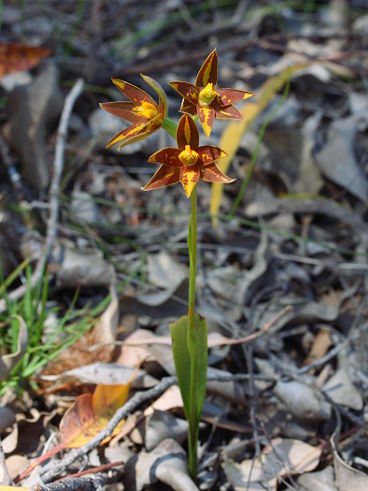
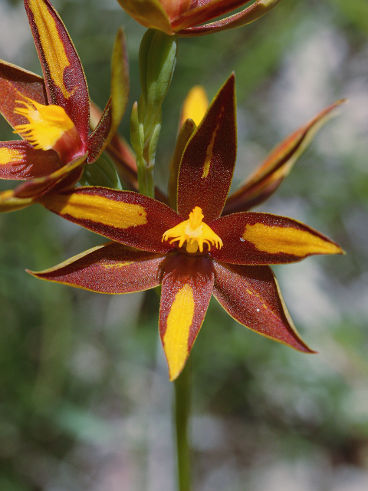
Leek Orchids are among the tallest orchids of Western Australia, with some species reaching a height of up to two metres. The Fringed Leek Orchid (Prasophyllum fimbria) can grow over a metre tall, but rarely flowers unless its habitat got burnt by a bushfire during the previous summer. A much smaller but more commonly encountered species is the Autumn Leek Orchid (Prasophyllum parvifolium), which — despite its common name — flowers in mid winter.


Donkey Orchids are among the most common and beautiful orchids of Australia. One of the most abundant species of the Darling Scarp is the Winter Donkey Orchid (Diuris brumalis). It is particularly common in the Perth Hills, flowering during the winter months of July and August. Not quite as common, but even more colourful, the Purple Pansy Orchid (Diuris longifolia) is characterised by its deep-purple flowers, although its colour is generally quite variable. It flowers much later in the year during October.

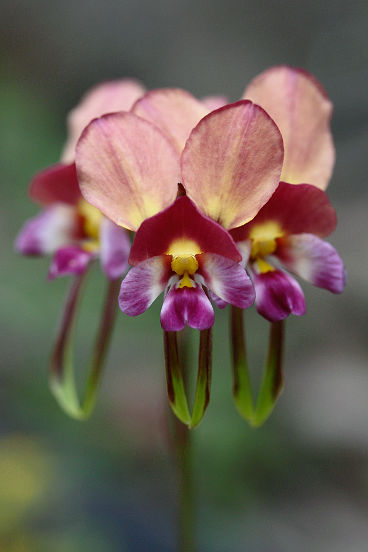
The genus Caladenia, commonly referred to as Spider Orchids, contains some of the most spectacular orchids found along the Darling Scarp. By far the most common is the Cowslip Orchid (Caladenia flava), which is one of the most abundant and widespread orchids of south-western Australia and can be seen almost anywhere along the Darling Scarp. Another fairly common species is the White Spider Orchid (Caladenia longicauda), which is widespread throughout south-western Australia and is known for its ability to form hybrids with several other Spider Orchids.


Other species of Spider Orchid are either less common or less frequently encountered for a number of reasons. Among those is the Yellow Spider Orchid (Caladenia denticulata) which is fairly short with narrow sepals and petals and therefore easily overlooked in the dense undergrowth of the forest. Despite its common name the Yellow Spider Orchid can be either pale-yellow or dark-red in colour. Another fairly common but often overlooked species is the Leaping Spider Orchid (Caladenia macrostylis) which blends in remarkably well with the surrounding leaf and bark litter.
Again others are minuscule in size and for that reason hard to find. One example is the Pink Fan Orchid (Caladenia nana) which has tiny pink flowers barely larger than the size of a fingernail. It is often much easier to spot in the season following a summer bushfire when all of the surrounding vegetation has been cleared.
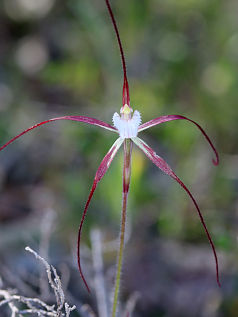
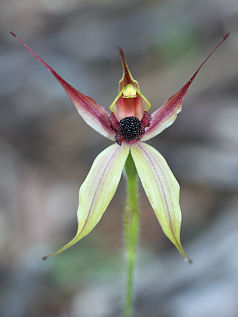
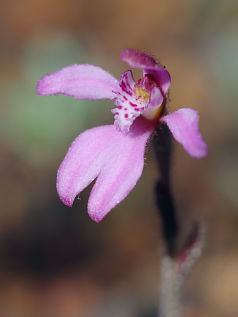
Parts of the Darling Scarp are also renowned for their large variety of colour forms of the Cowslip Orchid (Caladenia flava). The white and pink-coloured varieties have even been described as two separate species, the White Primrose Orchid (Caladenia lateritica) and the Pink Primrose Orchid (Caladenia rosea). However, the status of these species is questionable given that there are continuous transitions between the different colours; white, yellow and pink varieties can often be found growing together in the same place and right next to each other.

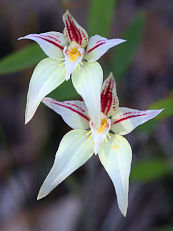
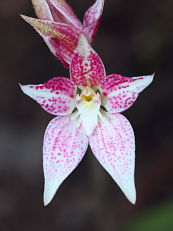
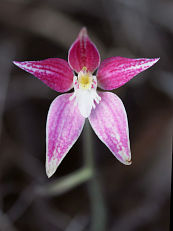
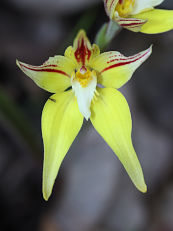
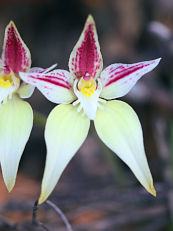
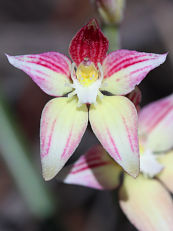
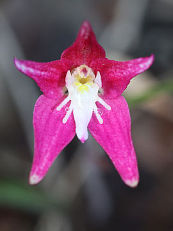
Among the most abundant orchids found along the Darling Scarp are the Purple Enamel Orchid (Elythranthera brunonis) and the Pink Enamel Orchid (Elythranthera emarginata). With their shiny, wax-like, purple and pink flowers they are a spectacular sight and often grow in large colonies, with the Pink Enamel Orchid generally requiring slightly moister habitats than its purple cousin. Occasionally, hybrids between the Pink and Purple Enamel Orchid are found (named Elythranthera × intermedia). Enamel Orchids are endemic to south-western Australia and found nowhere else in the world.


One of the orchids commonly associated with moist areas around granite outcrops is the Swamp Bunny Orchid (Eriochilus helonomos). Its tiny, white flowers appear early in the season, in late autumn, and are easily overlooked due to their small size and inconspicuous appearance. Another rare orchid found on and around granite outcrops is the Pink Bunny Orchid (Eriochilus sp.) with its handsome pink flowers which will only appear in the spring following a summer bushfire.


Among the most bizarre orchids of the Darling Scarp are the Duck Orchids (Paracaleana) and Hammer Orchids (Drakaea). Their strangely shaped flowers mimic female thynnid wasps in both visual appearance and scent. When a male wasp lands on the labellum and attempts to mate with the false female, a special hinge mechanism is activated that pushes the wasp against the stigma, thereby pollinating the orchid.



The most abundant species found on the Darling Scarp are the King-in-his-carriage (Drakaea glyptodon), the Warty Hammer Orchid (Drakaea livida) and the Flying Duck Orchid (Paracaleana nigrita). Although fairly common and widespread, they are notoriously difficult to locate due to their diminutive size and dull colouration. Another characteristic species found on the Darling Scarp is the Slender Hammer Orchid (Drakaea gracilis) which is somewhat less common and occasionally forms natural hybrids with the Warty Hammer Orchid that look halfway in between the two parent species.
The Slender-leafed Duck Orchid (Paracaleana gracilicordata) and the Granite Duck Orchid (Paracaleana granitica) are two extremely rare and local species that are endemic to a small, high-rainfall area of the Darling Scarp near Perth, where the orchids grow in mossy soil pockets on granite outcrops. The Granite Duck Orchid in particular is currently known from only a single population of a few dozen plants, making it one of the rarest orchids in the world.



Wildflowers
In late winter and early spring the Darling Scarp turns into a sea of colour when numerous spectacular wildflowers begin to blossom. The wildflower display is particularly colourful along the western edge where the Darling Scarp drops into the Swan Coastal Plain. A small selection of some of the most spectacular flowers is shown below. Not all of the flowers encountered on the Darling Scarp are native to Western Australia, though. Several weeds, in particular from southern Africa, have been accidentally or deliberately introduced to Australia, including flowers such as the Cape Dandelion (Arctotheca calendula) and the Cape Tulip (Moraea flaccida).
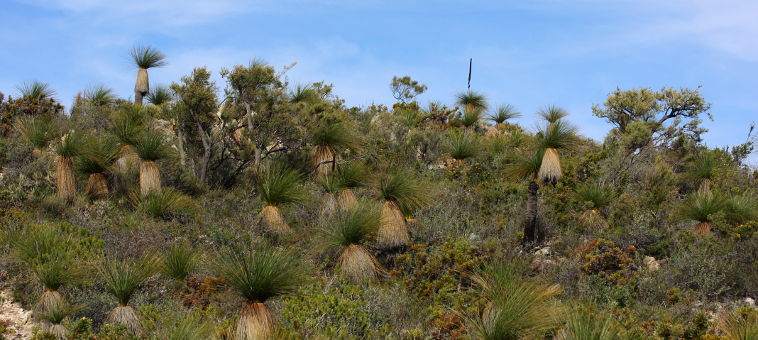
Among the most iconic wildflowers found along the Darling Scarp are several species of Fringe Lily (Thysanotus) which flower during springtime and are immediately recognisable by their characteristic purple flowers with dense fringe segments. Unfortunately, many of the species look alike and require expert knowledge and experience to unambiguously identify in the field. Another characteristic species of the rocky, granitic slopes of the escarpment is the Lemon-scented Myrtle (Darwinia citriodora) with its unique, brightly coloured flowers that appear in late winter.
Tiny, yet spectacular, are the bright-red flowers of the aptly named Candle Cranberry (Styphelia foliosa) which resemble lit candles on a Christmas tree and are found in early winter. While not uncommon, the Candle Cranberry is highly restricted to a small section of the Darling Scarp to the east of Perth.


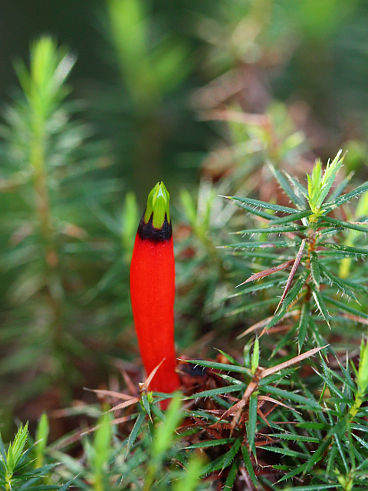
Among the most handsome wildflowers found on the Daring Scarp are numerous species of Myrtle (family Myrtaceae), most notably Honey Myrtles (Melaleuca), Featherflowers (Verticordia) and Starflowers (Calytrix). Starflowers in particular are abundant along the western edge of the Darling Scarp, and Calytrix glutinosa often forms dense colonies that turn the landscape into a sea of purple in late winter and early spring. Several more species of Starflower can be found on the Darling Scarp, including yellow or pink-flowered ones.
Featherflowers are named after their fluffy and feathery flowers that make them easily recognisable. Among the most colourful species is the Variegated Featherflower (Verticordia huegelii) which originally has white flowers that later turn pink as they age, with white and pink flowers often appearing simultaneously on the same plant. There are several more species of Featherflower along the Darling Scarp that come in various colours, but share the same feathery flowers.

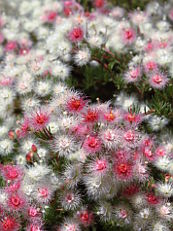
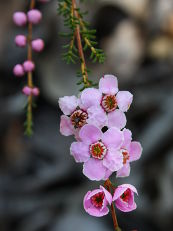
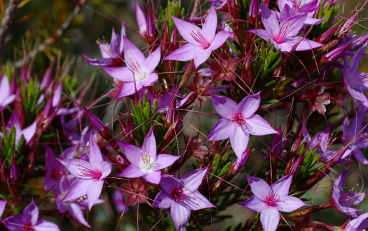
Two other families that are well represented in the Darling Scarp with a large number of genera and species are Proteaceae and Fabaceae. The former includes such iconic and spectacular Australian genera as Banksia, Dryandra, Hakea and Grevillea, but also a few lesser-known species such as the endemic Granite Petrophile (Petrophile biloba) with its peculiar and colourful flowers that are a common sight along the western edge of the Darling Scarp in later winter and early spring.
The Fabaceae family includes the iconic Wattles (Acacia) which are well-represented across Australia with a large number of similar-looking species. The other large group are the Pea Flowers with their small, yet colourful, flowers. A large number of different species across various genera can be encountered along the Darling Scarp. One of the most abundant genera is Daviesia with species such as Daviesia decurrens and Daviesia horrida, both of which are called Prickly Bitter Pea, a name alluding to their sharply pointed leaves.



Carnivorous Plants
The Darling Scarp is home to numerous species of Sundew (Drosera). These carnivorous plants produce sticky secretions that cover their leaves and are used to both trap and digest insects. Sundew is abundant throughout the Darling Scarp and can be found in large numbers in moist places such as in mossy soil pockets on granite outcrops or in winter-wet depressions. Many species produce beautiful flowers each year, while others will only flower in the season following a summer bushfire.



In addition to the large number of Sundew species, several other carnivorous plants can be found throughout the Darling Scarp, most notably several species of Bladderwort (Utricularia) as well as the rare and endangered Rainbow Plant (Byblis gigantea). Among the more common species of Bladderwort are the Redcoats (Utricularia menziesii) and Pink Petticoats (Utricularia multifida) which are found in moist areas on and around granite outcrops, often in large numbers.


Another common group of carnivorous (or protocarnivorous) plants are the aptly named Triggerplants (Stylidium). Their common name is a reference to their pollination method, whereby an insect landing on the flower will trigger a mechanism that pushes the column against the insect to cover it in pollen. Just like their famous cousin, the Sundew, Triggerplants are covered in numerous sticky glandular hairs that are believed to be used for trapping and digesting tiny insects. Triggerplants are among Australia’s most abundant and widespread (proto-)carnivorous plants, and the Darling Scarp is home to a large number of different species. They are generally very common and often grow in the company of other carnivorous species such as Sundew (Drosera) and Bladderwort (Utricularia).
